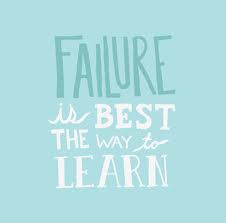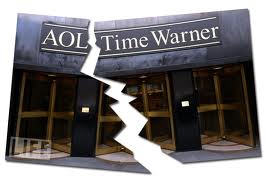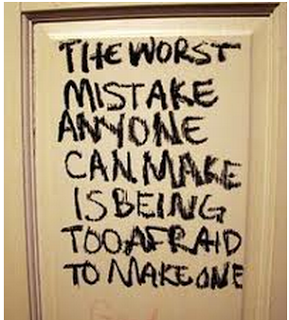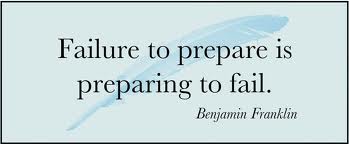Success through Failure – Avoid the 4 Factors that Create the Perfect Storm
 One can learn more from failure than success. And failure is inevitable.
One can learn more from failure than success. And failure is inevitable.
The wisdom of learning from failure is incontrovertible. Yet organizations that do it well are extraordinarily rare.
Most executives I’ve talked to believe that failure is bad (of course!). They also believe that learning from it is pretty straightforward: Ask people to reflect on what they did wrong and exhort them to avoid similar mistakes in the future—or, better yet, assign a team to review and write a report on what happened and then distribute it throughout the organization.
These widely held beliefs are misguided.
- First, failure is not always bad. In organizational life it is sometimes bad, sometimes inevitable, and sometimes even good.
- Second, learning from organizational failures is anything but straightforward.
Organizations need new and better ways to go beyond lessons that are superficial (“Procedures weren’t followed”) or self-serving (“The market just wasn’t ready for our great new product”).
In fact in recent years we’ve gone so far as to argue that we need to celebrate failure. Mantras like “Fail More” or “Fail Faster” adorn many office walls where our prized motivational posters used to hang.
There are definitely positive lessons to be learned from failure, but I think it’s better to learn from the failure of others than our own. And in M&A it is far better to learn from the mistakes of others.
We know of the big, bad deals, like the merger of AOL and Time Warner or the acquisition of Snapple by Quaker Oats. They are billion dollar failures.

These high profile failures shape the perception that most M&A deals fail, which shape business strategies and public policy, when in fact M&A failures amount to a small percentage of the total volume of M&A activity.
Investments through acquisition appear to pay about as well as other forms of corporate investment. The mass research suggests that, on average, buyers earn a reasonable return relative to their risks. So the important questions to ask are, “Why did they fail and what can we learn from them?”
On the whole, M&A failure is complicated, the result of a convergence of forces. But conventional thinking sees it differently, preferring quick and dismissive explanations arguing, for instance, that merger failure is due to some bad apples in the executive suite, nonobservance of some fundamental business rule (“They took their eye off the customer”), or some kind of industry hoo-doo curse (“Technology mergers have never worked”). There is a nugget of truth in these statements but they are more remarkable for that they ignore than what they tell us.
Mergers and acquisitions fail because of a “perfect storm” of factors that combine to destroy the new firm.
- Strategy – In the best deals, buyers acquire targets in industry related areas. In the worst deals, targets are in areas that are more distant. This indicates that better knowledge of a related industry may yield fewer surprises and more opportunities for success.
- Corporate Culture Fit -The fit of the buyer and target matter a great deal. In successful deals, buyers acquire from strength – the performance attributes of the buyers are stronger than their targets suggesting that in good deals, the buyer brings something important to the success of the combined company. In the worst deals, buyers acquire from weakness. There, the target is significantly stronger, and one can guess that the buyer hoped to fix some problems by means of the acquisition.
- “Hot” Market Conditions – The worst deals tend to happen in “hot” market conditions. Such as when we’re experiencing “irrational exuberance” about the economy or when a particular industry or a niche within that industry is hot, like social media or mobile technology today, The best deals happen in cooler market conditions.
- Tailored Deal Terms – Finally, deal tailoring pays. One size does not fit all. Better deals are associated with payment by cash and earnout schemes and the use of specialized deal terms. The worst deals are associated with payment by stock.
 Every CEO should want his or her firm to avoid the deal from hell. But does that mean we should avoid M&A all together? Get a grip.
Every CEO should want his or her firm to avoid the deal from hell. But does that mean we should avoid M&A all together? Get a grip.
The huge advances in civilization came from people who, at some considerable commitment of personal wealth and comfort, took a risk. We want the business economy to take risks. But to get the advances, like new drugs, better connectivity with others, or more efficient transportation, we need to put up with a certain amount of trial-and-error.
So rather than avoiding larger mergers we should mitigate the risk of failure through better systems of management. Everything begins with setting the highest expectations of management. These expectations should be focused on the process rather than the outcomes in the belief that how you do business has a big influence on the results.
p.s.
If you’re wondering how you build a company that you can sell for a premium in a few years, contact me to discuss the Valuation Amplification Process.
I also invite you to download the white paper and learn the 5 step process on How to Quickly Increase Your Valuation: a Proven 5 Step Process. http://www.therevenuegroup.net/free-offer.html
Related articles
- Studying Business Failure to Achieve Business Success (embercarriers.com)
- When Two Worlds Collide: M&A Communications During the Integration Challenge (business2community.com)


Trackbacks & Pingbacks